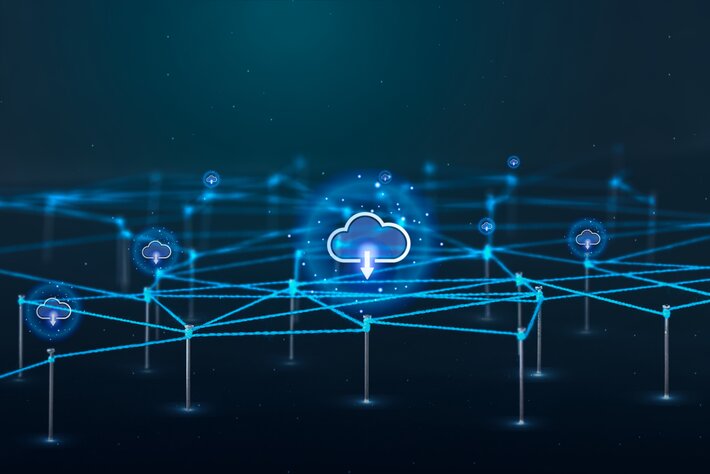The rise of IoT is creating a plethora of exciting business opportunities as well as challenges for enterprises seeking to realize the business potential of connecting their assets. In order to support enterprises in reaping the full benefits of IoT in their business operations myriad IoT platforms have launched into the market over recent years, which in various ways, facilitate the development of applications and solutions.
Cumulocity is a pioneer in IoT platform development having recognised the future need to manage the multiplicity of networks created through M2M/IoT to the same high standards as in telecoms networks. Originally started as an innovation programme within Nokia Siemens Networks in Mountain View, California in 2010 and founded as an independent company in 2012, Cumulocity remains a leading global IoT application enablement platform provider, supporting more than 100 customers, in excess of 2,500 developers and over 1,000 tenants across five continents.
IoTNow speaks to Bernd Gross, the chief executive of Cumulocity, about the IoT platforms market and strategic considerations for enterprises.
IoT Now: IoT has massive market potential and growth is accelerating. What have been the major challenges that need to be addressed and what are the major growth areas that you are seeing?
Bernd Gross: The major challenge to extract the full value from IoT adoption is to reduce the perceived complexity of setting up solutions and mining value from the data. This requires the integration of the IoT solution into the wider business environment, including operations, processes and organisation. Everyone instinctively agrees about the vast potential of the technology, but when it comes to actually defining the business case and technical solution, things get more complicated.

Once that hurdle is passed, it can take a lot of work to get what is usually a wide assortment of devices and systems synced up on a single application platform. At Cumulocity we have addressed exactly these aspects in order to make adopting IoT as easy and as straightforward as possible. By using the best available tools, enterprises can save themselves considerable cost and effort which allows them to launch new applications far more quickly.
After six years of working in this industry, we now see that many applications are beginning to reach maturity. Some of the best examples are remote monitoring, predictive maintenance, condition monitoring and process automation. Remote monitoring of high value assets both in the enterprise as well as consumer market, whether it is cars, trucks or machines, makes perfect sense from an economic standpoint. For example, Duerkopp Adler, a manufacturer of industrial sewing machines, has improved its international service level in a cost effective way by the remote monitoring and control of their equipment. Advanced data analytics creates vast new opportunities in predictive maintenance and condition monitoring that help service organisations live up to the highest customer requirements and expectations. High resolution real-time data streams enable new levels of process automation in everything from supply chains to manufacturing.
IoT Now: More and more companies seem to be adopting IoT platforms. What are the business reasons behind this? Where do IoT platforms add the most value?
BG: Using a comprehensive IoT application enablement platform allows organisations to avoid many aspects of solution development, allowing them to progress their IoT projects and initiatives at a faster pace. Cumulocity’s platform solution enables three phased IoT adoption:Additional – which adds IoT data to the existing business processes; Operational – which changes and optimises operational processes; and Innovational – which transforms the business with new services and business models.
With pre-defined system components for every part of the applications stack, the IoT platform offers a fast track to prototyping and allows businesses to use the same environment for pilots and commercial deployments. This allows enterprises to easily trial IoT solutions and hedge the risks associated with technology decisions. Use of the right application enablement solution mitigates the main business risks of the traditional point solution approach as well as reducing the costs of maintaining the solutions.
Traditional point solutions pose a number of problems in the medium term, such as accommodating changing business models, high operational costs, limited scalability and stability, lack of sufficient security concepts and so forth. A platform approach supports constant innovation by abstracting the machine data, protocols and access network from the application innovations. As a result, we are seeing more and more companies moving their existing point solutions to an application enablement platform. Trackerando, a provider of a wide range of tracking solutions, recently migrated from its legacy point solution to Cumulocity’s application enablement platform to deliver a fully featured secure consumer tracking service.

IoT Now: So what would you consider to be the most important things an enterprise should consider in selecting an IoT platform?
BG: There are many different types of IoT platforms available in the market today and it can be difficult to know what sets them apart from each other. From a business continuity perspective, an IoT platform should provide the best-in-class capability in terms of security, open interfaces, carrier grade reliability, service levels, scalability and allow a seamless integration into the back-office environment which is essential to the enterprise’s business operations. From our perspective, there are two main forms of IoT platforms. The first is universal platforms that offer all the functionality required by developers through an open, well-documented API. The second is application-specific platforms, which were originally developed for a specific use-case and later extended with some APIs. We believe that the first category of platforms is clearly the best and most future-proof choice for enterprise customers. The Cumulocity platform has been under constant development by a large team for multiple years. Today we offer the most extensive code-base in the industry in a highly secure platform environment that is carrier grade. Our real-time streaming analytics and SaaS integration builder enables rapid development of end-to-end process automation applications, connecting devices to core IT-systems.
IoT Now: A growing amount of attention is being focused on Industrial IoT. What is specific about this vertical?
BG: The industrial sector is in a stage of rapid transformation due to globalisation and ongoing automation. Most of the enterprises in this sector are dealing with globally dispersed assets, whether these are production machinery or in the transport of high value goods. High value industrial assets are increasingly being deployed on a global scale.
The products are getting more sophisticated and complex in their design and, at the same time, customer requirements for reliability and service are becoming ever more demanding. IoT provides enterprises in the industrial sector with the capabilities for process automation and improvements in customer service, anywhere in the world. Smart solutions generate a direct business value and a rapid return on investment. Yet, getting the solutions in place can be quite complicated.
The multi-tiered industrial environment has many specialist providers competing in a highly intense global arena and the embedded IT systems for control and automation use a wide range of protocols and standards to meet very specific requirements in different vertical markets. This is why an open and comprehensive IoT platform can add so much value. Instead of creating a brand new application from scratch for each new device type and protocol, businesses can re-use existing modules and benefit from constant improvement as members of a large platform community. On top of that, the best IoT platforms provide a wide selection of network connectivity options to accommodate secure communication using a wide range of fixed and wireless technologies.
IoT Now: IoT deployment models are evolving and becoming multi-faceted. What changes are you seeing going forward and what is their value?
BG: The accelerating adoption of IoT solutions into business processes is also increasing the pressure on IoT application enablement platforms to expand their scope and functionality. IoT is at the forefront of IT technology development where new advances in big data analytics and communication often find their first applications. One of the latest trends is edge analytics, a tiered approach in data processing, where analysis and actions are done at the right point in the process chain to ensure the maximum impact at the lowest resource usage. Certain business decisions can be taken locally based on the IoT data being available, but in order to optimise the full end-to-end process other business decisions can only be taken on a platform level which combines data from all the different components of the process. This can be extended to multi-tiered IoT platforms in which multiple devices, systems and solution providers interact as part of a complex environment.
Another dimension to address in a globally dispersed solution is dealing with legislation on data privacy, storage and concerns on data security. Having the capability to operate the IoT application enablement in a geo-distributed data centre environment is of the essence. All these new capabilities, as well as potential future requirements, should be considered when planning for the replacement of legacy purposebuilt and proprietary applications. A platformbased approach is the best way to future-proof IoT applications designed today and make sure that they grow along with the organisation’s requirements and the transformation of markets.










